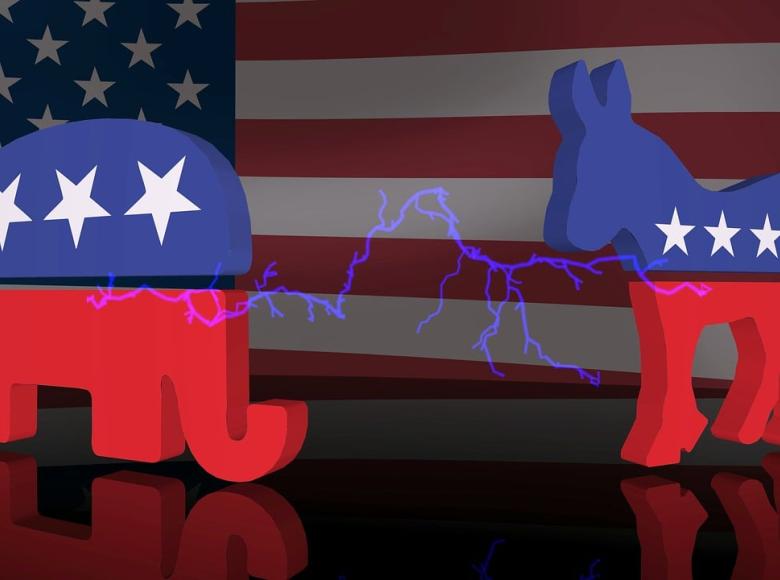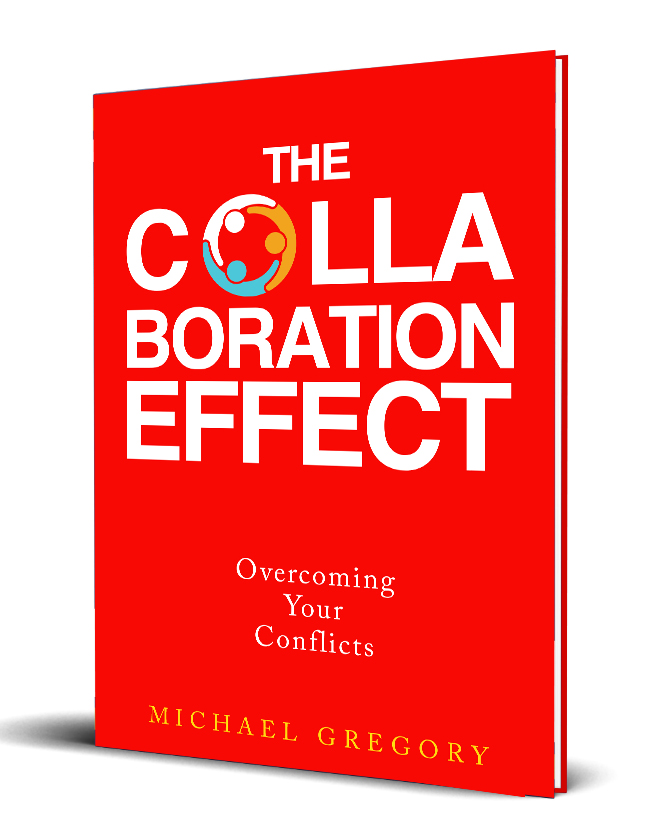
As a successful mediator, negotiator, and conflict resolution specialist many have reached out to me and said Mike you need to go to Washington. I have consistently stated that is a much bigger problem than I can tackle, and then I thought even with reds and blues there are ways to argue with others that are diametrically opposed to your point of view. Take this video by Dr. Daniel Shapiro, Director of the Harvard International Negotiation Program. The commentary that follows takes major elements from this video and other experiences to offer a way out of the mess between reds and blues.
Think big
The reds and blues are basically tribes that believe everything we stand for is right and everything the other tribe stands for is wrong. It has gotten so bad that in many instance rather than promoting compromise and what is best for the country one side will be so loyal to their tribe that they are willing to sacrifice what is best for the country if it will result in a perceived win for the other side. Each side is oriented on tearing down the other side more than promoting the common good. This is bad.
Our enemies understand this and flood social media with ammunition, false information, and encourage discord simply to make the situation worse in America. Unfortunately, tribal followers eat this up with various news sources, fake news, and talking heads that are focused on blame that simply inflames the emotions of us versus them. So, what does Dr. Shapiro suggest?
It’s not about what. It is about how
With emotionally charged arguments it is only natural to feel anger and frustration. Our tribal trap of reds and blues tells us “I shall not believe the other side or give any credibility to the other side.” What do the sides do? Each side does everything they can to prove they are right, that the other side is wrong, and to do everything they can to put the other side down. The problem according to Dr. Shapiro is not about the what but with the how we should argue.
There are three big barriers to overcome. Dr. Shapiro refers to them as identify, appreciation, and affiliation.
Identify
What are your core values and core beliefs that make you feel threatened when you are interacting with the other side? When your sense of self and identity is triggered by the other side your emotions take over. When this happens your sense of self and pride are at stake. Knowing who you are and what you stand for is being attacked.
When you are attacked, note how are feeling.
What is being attacked. Is it respect, equality, loyalty, liberty, care, fairness, or something else? Recognize how you are feeling and why. You feel like you are being threatened. Knowing this, do all you can to remain calm, confident, and competent even in very trying circumstances. Don’t give into anger, frustration, and blame. Keep your eye on the prize. You want to stay focused on the problem.
Appreciation
Everyone wants to be appreciated. However, in this instance the last thing each side wants to do is appreciate the other side. So, what can you do. Listen and understand. In my book, The Collaboration Effect, I state that listening actively is the most important chapter. In Dr. Manny Steil’s and Dr. Richard Bommelje’s book on Listening Leaders, they offer specific advice on how to listen in greater detail. So, what can you do to listen better?
Don’t talk. Actually, listen to the other party and consider what else you should be asking to help you understand and not to attack.
Dr. Shapiro suggests taking at least 10 minutes to really listen without judgment. What are the values behind their perspective? What is the logic and rationale for the other side to hold this perspective? See the value in their perspective. Let them know that you hear where they are coming from. Let them know that something they are saying makes sense. Let them know that they are appreciated. Everyone wants to be appreciated. Recognize that you have the power to appreciate them.
Affiliation
What is the emotional connection between you and the other side? Instead of looking at any given issue as my proposal versus your proposal, the question is what do you and I have in common that we can both agree on.
What is common ground? Try and turn from an adversarial situation to a collaboration to address what we both have in common.
Instead of me versus you, it becomes us addressing the common problem and looking at interests to try and address the common problem. Ask what their perspective is and how we can get as many of our joint interests met at the same time. Turn this into a collaborative conversation. This is a way out of this common mess if we really try to apply this approach even in Washington.
Bringing it all together
If you have an attitude to help and truly address these three elements it is possible even for reds and blues to work with one another. Dr. Shapiro suggests that we start a positive revolution to begin to work with each other to address issues in Washington. You can begin to apply this with anyone you are in conflict with. This would allow for greater appreciation, understanding, and affiliation. Think of how this could transform politics in Washington and in other areas of conflict in our country and in our world.
The Collaboration Effect states that it is not about me, it is all about we, but it starts with me. Are you willing to try and apply this commentary? Are you willing to try and build authentic connecting relationships with someone you loathe and hate? This takes real guts. Are you willing to listen actively with someone you wholeheartedly disagree with? This takes a real resolve to do this. Can you practice forgiveness? Can you not hate?
No one said this would be easy. As a mediation and negotiation specialist I see this every day. Mediation only works if both parties agree to try the mediation process. I meet with the parties ahead of time and if one party is not willing to work with the other side, there is no reason to waste each other’s time. But if they are, then carrying out the commentary presented here makes a lot of sense overall. You don’t know if this can work unless you reach out and try.
What do you think?
About the author
Mike Gregory is a professional speaker, an author, and a mediator. You may contact Mike directly at mg@mikegreg.com and at (651) 633-5311. Mike has written 12 books (and co-authored two others) including his latest book, The Collaboration Effect: Overcoming Your Conflicts, and The Servant Manager, Business Valuations and the IRS, and Peaceful Resolutions that you may find helpful. [Michael Gregory, ASA, CVA, MBA, Qualified Mediator with the Minnesota Supreme Court]

